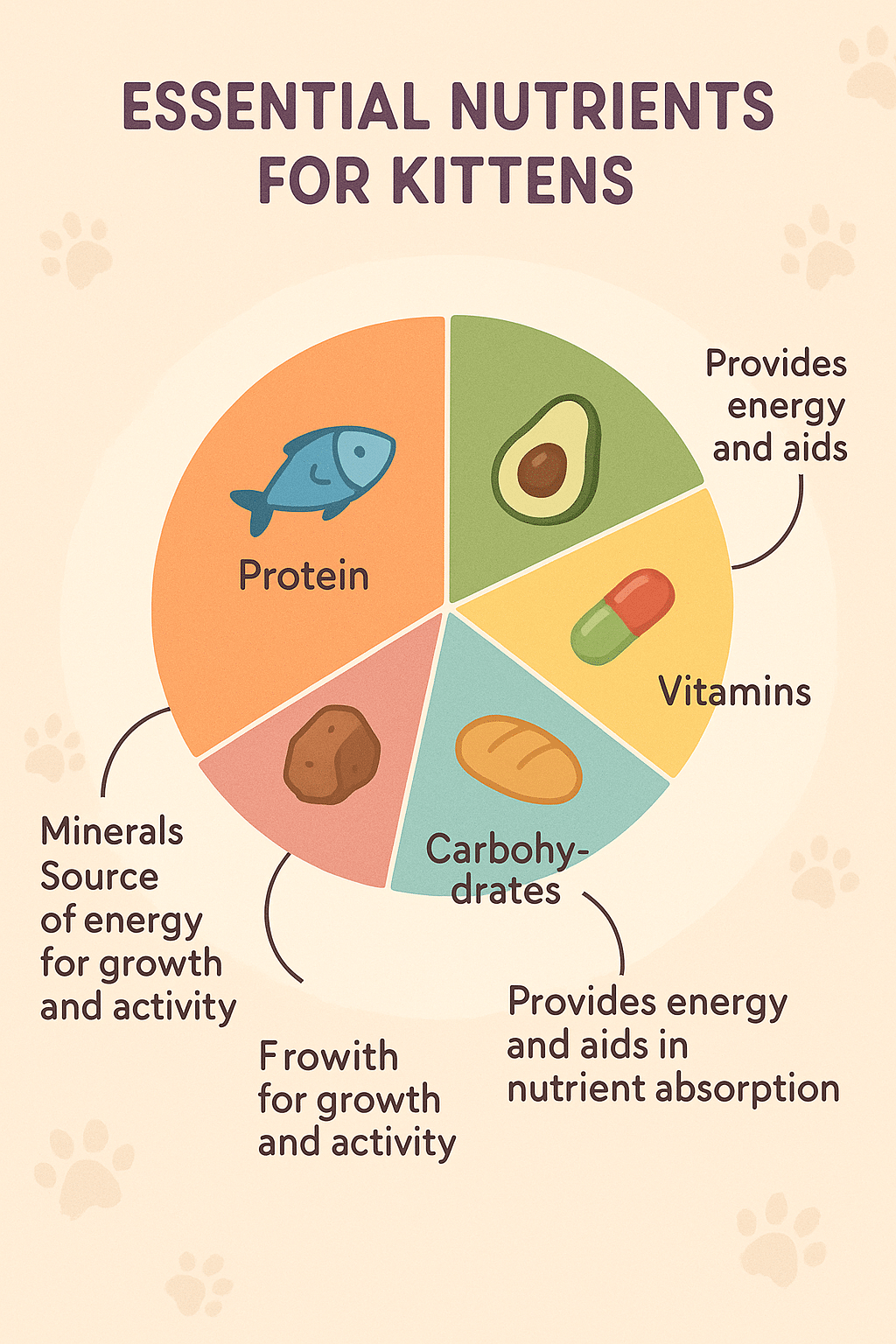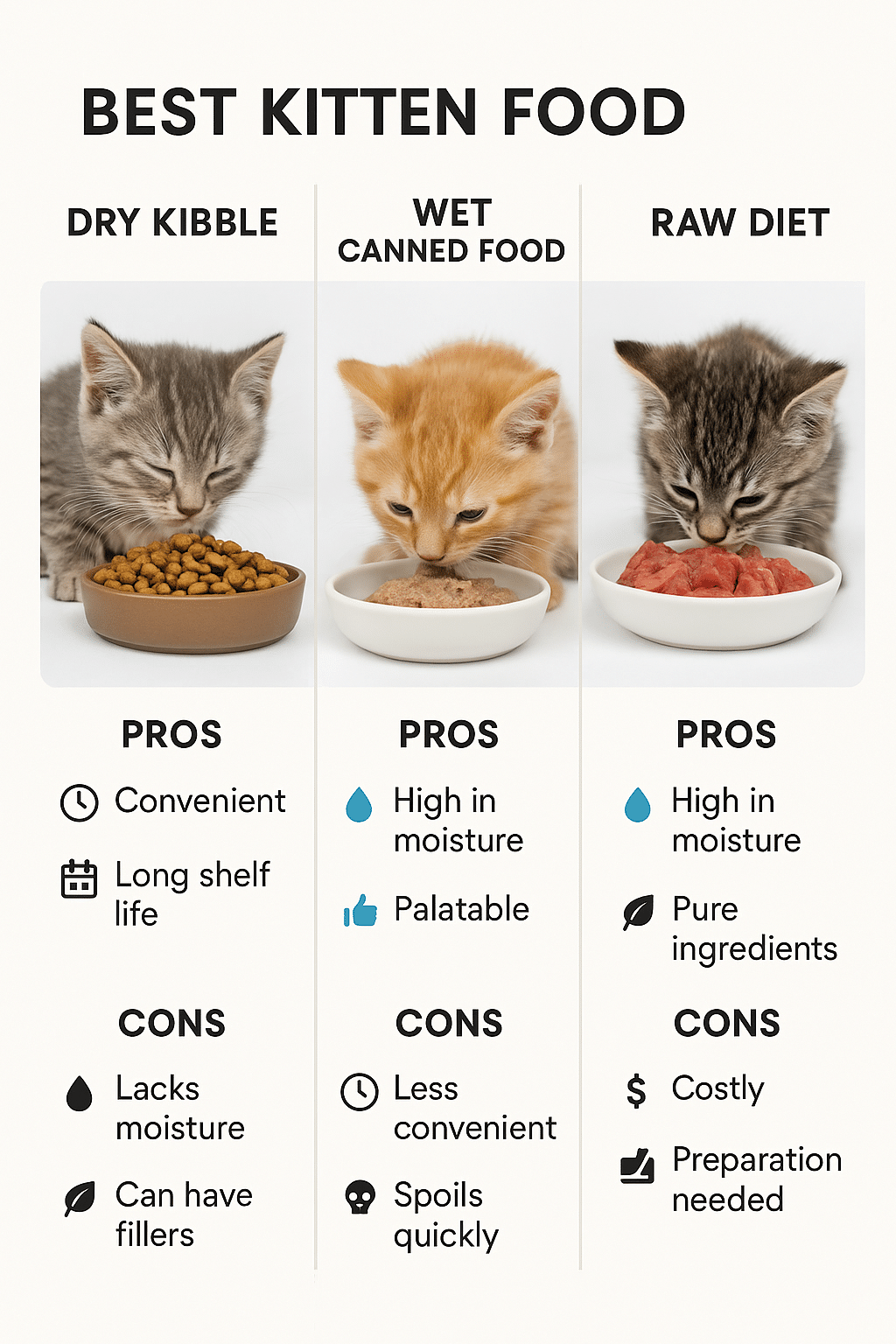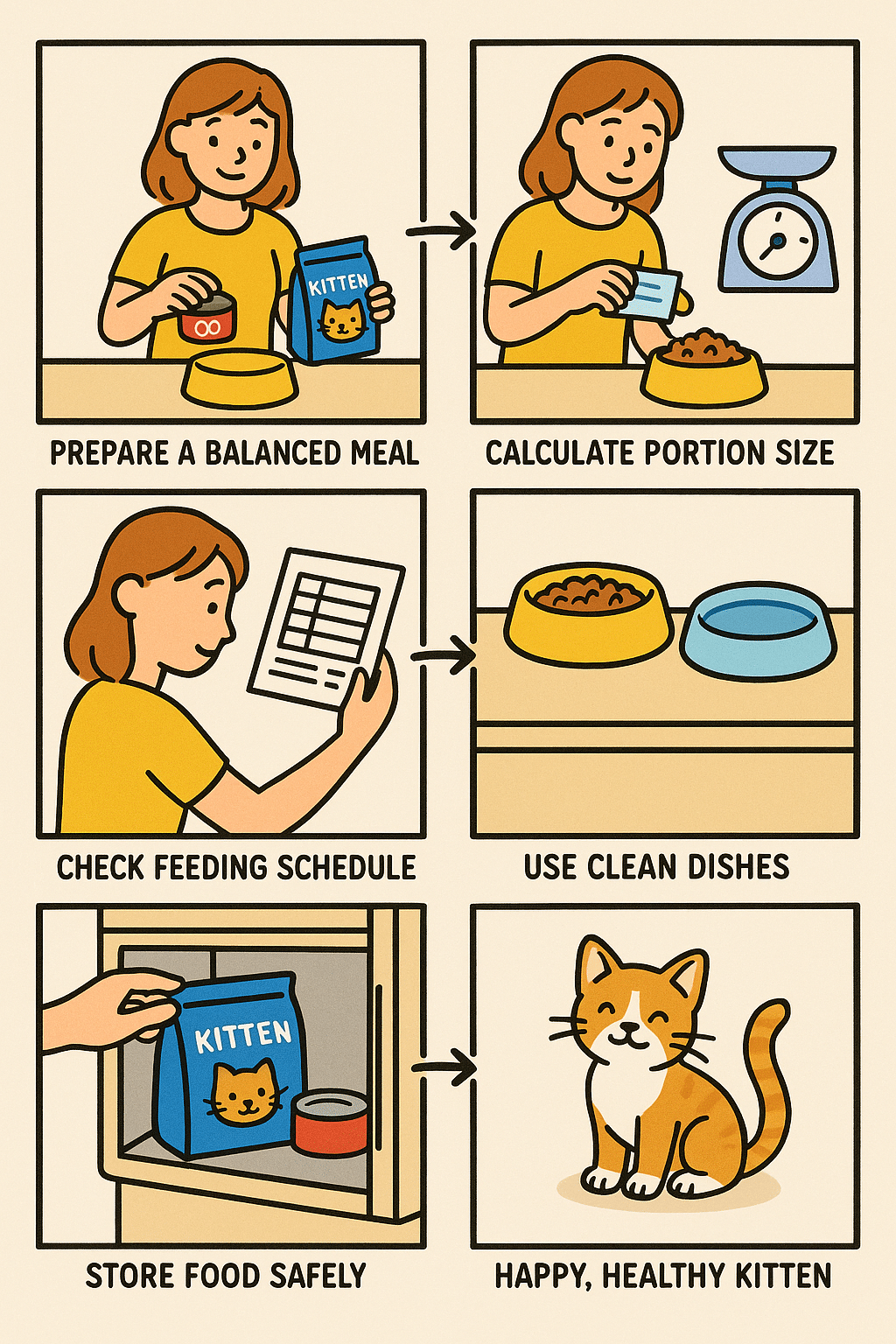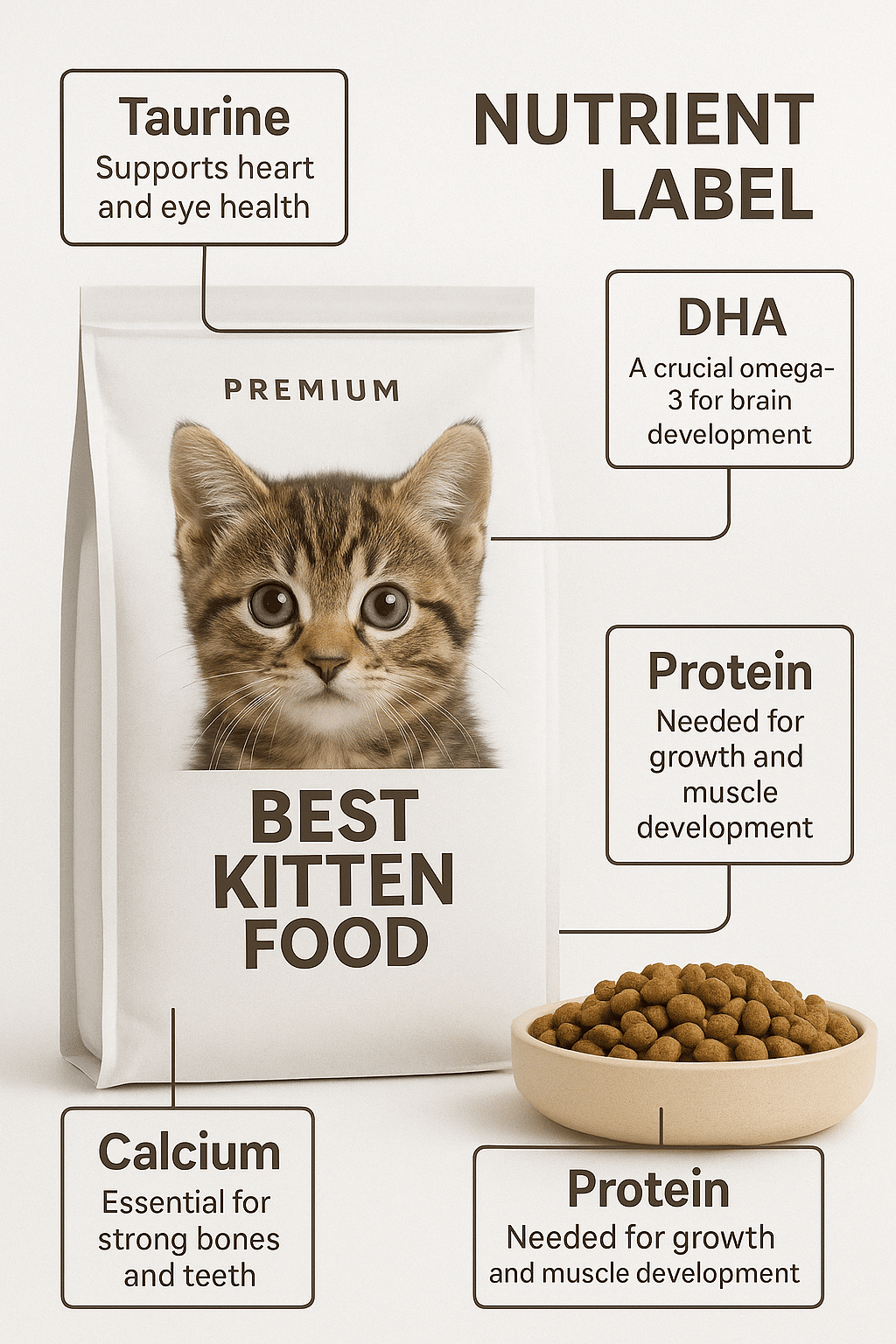Bringing a new kitten into your home is an exciting adventure filled with joy, challenges, and lots of learning. One of the most important responsibilities as a pet owner is ensuring your little furball receives the best nutrition possible to grow healthy, strong, and happy. That’s where finding the best kitten food becomes crucial. From understanding the unique dietary needs of kittens at different stages to choosing between wet, dry, or mousse textures, the world of kitten nutrition can seem overwhelming. But don’t worry—I’m here to guide you through this journey with expert advice, solid research, and practical tips.
In this detailed guide, we’ll explore everything about feeding your kitten right: the essential nutrients they need, comparisons between different food types, and comprehensive reviews of seven of the top kitten food brands and products on the market today. I’ll also share insights on feeding routines, recognizing sensitive stomachs, and where to find these foods conveniently near you. Whether you’ve got a playful tabby or a delicate Siamese, this article will arm you with trustworthy information so you can confidently pick the best kitten food for your precious companion.
Understanding Your Kitten’s Nutritional Needs

Every kitten is a bundle of potential, growing rapidly and requiring a specialized diet tailored for their unique development. Let’s break down what makes kitten nutrition so vital and how different nutrients and feeding considerations contribute to a thriving feline.
Growth Stages and Corresponding Dietary Requirements
Kittens don’t just eat more than adult cats—they require a different balance of nutrients altogether. During their growth stages, from birth until about one year, their caloric and nutrient demands are sky-high.
- Neonatal (0–4 weeks): This phase depends heavily on mother’s milk, which offers ideal hydration and nutrition, including antibodies for immunity.
- Weaning (4–8 weeks): Kittens transition gradually from milk to solid foods. They need easily digestible, soft-textured foods rich in protein and energy.
- Juvenile (2 months to 1 year): At this point, kittens require nutrient-dense diets with high protein, essential fats, vitamins, and minerals to support organ development, muscle growth, and brain function.
It’s important to feed kitten-formulated diets that account for the rapid development during these stages, as adult cat foods often lack these precise nutritional ratios.
Key Nutrients for Optimal Development: Protein, DHA, and More
High-quality protein is king when it comes to kitten foods. Kittens need more protein than adult cats—typically about 30% to 38% on a dry matter basis—because it’s the building block for lean muscle mass and organ tissues. But protein quality matters too; look for foods where named meats (chicken, turkey, fish) are the main ingredients, not vague meat by-products.
DHA (Docosahexaenoic Acid), an omega-3 fatty acid found naturally in fish oils and eggs, plays a crucial role in brain and eye development. Including DHA in kitten food benefits cognition and vision, especially during the first 12 weeks when neural development peaks.
Other vital nutrients include:
- Calcium and phosphorus: For strong bones and teeth.
- Taurine: An amino acid essential for heart and eye health.
- Vitamins A, E, and C: For immune support and antioxidant protection.
- Prebiotics and probiotics: To promote a healthy digestive tract and microbiome balance.
Importance of Digestive Health and Hydration
Growing kittens can be prone to digestive upsets if their diets aren’t carefully chosen. Ingredients like fiber and probiotics found in premium kitten foods support gut health and regularity. Additionally, hydration is key. Kittens often get much of their water intake from wet or mousse-style foods, making these formats valuable to prevent dehydration.
Comparing Kitten Food Types: Wet Food, Dry Food, and Mousse

Choosing the right form of kitten food takes thought and sometimes a bit of trial and error. Let’s weigh the benefits and drawbacks of each to help you decide what suits your kitten best.
Benefits and Drawbacks of Wet Food for Kittens
Wet cat food, including pâtés and chunks in gravy, offers many benefits:
- High moisture content (70–80%) helps maintain hydration.
- Typically high protein with fewer carbs than dry food, closely mimicking a natural feline diet.
- Softer texture is ideal for kittens transitioning from milk to solids or those with teeth development issues.
- Often more palatable, which is a plus for picky eaters or kittens feeling under the weather.
On the flip side, wet food tends to be more expensive per serving and less convenient to store once opened. It also requires more frequent feeding or portioning to prevent spoilage.
Advantages of Dry Kitten Food and When to Use It
Dry foods have come a long way, offering their own perks:
- Cost-effective and long shelf life.
- Helps with dental health, as crunchy kibble can reduce plaque buildup.
- Easy to dispense, making it good for free feeding or multi-cat households.
Look for formulas fortified with essential nutrients like DHA and prebiotics for digestive support. Dry food can be introduced gradually or used as a supplement to wet or mousse options.
Specialized Textures: The Role of Ultra-Soft Mousses in Weaning and Early Growth
Ultra-soft mousse foods provide an especially gentle texture crucial during the weaning phase. They mimic the creamy consistency of mother’s milk, making the food approachable for young kittens learning to eat solids. Moreover, mousse formulas often contain highly digestible proteins and prebiotics, supporting the fragile digestive systems of infants and mother cats alike.
7 Best Kitten Food Brands and Products

Now, let’s dive into seven standout kitten food options available today. These brands have earned my endorsement through vet recommendations, ingredient quality, palatability, and positive user experiences.
Purina Fancy Feast Grain Free Pate: Variety and Protein-Rich Flavors
Purina Fancy Feast’s Grain Free Pate line is a go-to for wet kitten food, widely available through stores like Stop & Shop Express and Lucky’s Market. It contains an impressive array of flavors to cater to finicky tastes, ensuring kittens crave mealtime.
Available Flavors Include:
- Ocean Whitefish & Tuna Feast: High in protein, providing essential amino acids from sustainable sea sources.
- Tender Beef & Liver Feast: Rich and savory, ideal for kittens desiring more robust tastes.
- Cod, Sole & Shrimp Feast: A seafood medley providing beneficial omega-3s.
- Chicken Feast: Classic poultry flavor known for high palatability and digestibility.
- Turkey & Giblets Feast: Offers variety that mimics the meats kittens might encounter in nature.
These wet foods are grain-free, which can help sensitive kittens or those prone to grain allergies or intolerances. The pate texture is excellent for younger kittens easing off milk.
Explore Purina Fancy Feast Grain Free Pate
Hill’s Science Diet Dry Kitten Food: Vet-Recommended Nutrition Featuring DHA and Digestive Support
Hill’s Science Diet is a veterinarian-trusted brand that focuses on science-backed nutrition designed to fuel kittens’ rapid development.
Highlights:
- Ingredients include high-quality chicken protein.
- A blend of prebiotic fibers and ActivBiome+ digestion technology supports balanced intestinal microbiomes.
- Natural DHA from fish oil facilitates brain and eye maturation.
- Balanced minerals help build strong bones and teeth.
Hill’s offers specialized versions, such as their Indoor Kitten Formula designed for less active kittens, tailoring nutrients accordingly. Available in sizes ranging from smaller bags suitable for trial feeding to larger bulk options.
Prices vary depending on retailer, with options at PetSmart, Petco, and Tractor Supply.
Discover Hill’s Science Diet Kitten Food
Royal Canin Mother and Baby Cat Ultra Soft Mousse: Ideal for Weaning and Mother Cats
Royal Canin’s Mother & Babycat Ultra Soft Mousse is specially formulated for kittens aged 1 to 4 months and their lactating mothers. It addresses the demanding nutritional phase of weaning, supporting digestive health and immune function.
Key Benefits:
- Ultra-soft texture simplifies the transition from milk to solids.
- Contains antioxidants like vitamins E and C to strengthen the immune system.
- Includes prebiotics for maintaining a balanced intestinal flora.
- Meets the high energy demands of mother cats during gestation and nursing.
Perfect for kittens that find firm food challenging, helping them adapt naturally without stress.
Find Royal Canin Mother & Babycat Mousse
Instinct Kitten Original Grain-Free: High-Quality Animal Protein with Live Probiotics
Instinct’s grain-free dry kitten formula stands out with 81% real animal ingredients, including cage-free chicken as the lead protein source. The recipe avoids grains, by-products, and artificial preservatives, focusing on a natural, wholesome balance.
Features:
- Inclusion of natural DHA from chicken eggs aids cognitive development.
- Contains guaranteed live probiotics for digestive health.
- Frozen-dried raw pieces on kibble enhance flavor and nutrition.
- Supports healthy skin, a shiny coat, and immune resilience via omega-rich oils and antioxidants.
Available at PetSmart, it offers an excellent balance between premium quality and price (around $29.99 for 4.5 lb).
Learn More About Instinct Kitten Food
IAMS ProActive Health Kitten: Budget-Friendly Protein-Rich Dry Food with Brain Development Nutrients
If you’re looking for a budget-conscious option without compromising on protein, IAMS ProActive Health Kitten formula includes:
- High-quality chicken protein.
- Omega-3 DHA for brain and eye development.
- Prebiotics for digestive health.
Available at Walgreens for $13.49 (3.5 lb) and at Walmart or PetSmart in larger sizes at $18-$19 price points.
While more affordable, it remains nutritionally balanced and veterinarian-recommended for supporting kitten growth.
Smalls Human-Grade Fresh Wet Cat Food: Fresh, Natural Ingredients Delivered to Your Doorstep
Smalls distinguishes itself by offering human-grade, fresh wet cat food crafted with real, whole ingredients and no fillers or artificial preservatives. They provide subscription delivery, making feeding convenient for busy pet owners.
Advantages:
- Meals made with carefully sourced, natural meats.
- Variety of recipes to suit kitten preferences.
- Freshness supports digestive health and palatability.
- Risk-free sampler available to find your kitten’s favorite.
Note: Smalls had a precautionary recall in the past on limited batches but has since ensured rigorous safety standards.
Purina ONE Kitten Formula Dry Cat Food: Balanced Nutrition with Dental and Skin Benefits
Purina ONE offers a premium dry kitten food with real chicken as the top ingredient. This formula provides a comprehensive nutrient blend ideal for growing kittens:
- DHA supports brain and vision development.
- Antioxidants like vitamins E and A boost immune health.
- Omega-6 fatty acids promote a radiant coat and healthy skin.
- Crunchy kibble texture helps reduce plaque, promoting dental care.
- Free from artificial flavors and preservatives.
Available across Purina’s online store, Walmart, Petco, and more, offering convenience and reliability.
Visit Purina ONE Kitten Formula
Tailoring Feeding Routines Based on Age, Breed, and Health Conditions

Every kitten’s needs are unique, so adjusting feeding routines to suit your furry friend is essential.
Guidelines for Portion Sizes and Feeding Frequency
Kittens generally should be fed 3 to 4 times daily until six months old, then twice per day after. Portion size depends on age, weight, and activity level. Follow manufacturer recommendations and consult your vet to avoid underfeeding or overfeeding.
Transitioning Kittens from Milk to Solid Foods Effectively
Start introducing solid food as a wet or mousse-type around 4 weeks old, mixing it with formula or water to soften textures. Gradually increase solid food while reducing milk intake over weeks. Patience is key—some kittens adapt quickly, others take their time.
Monitoring for Food Allergies and Sensitive Stomachs
Watch for GI signs like vomiting, diarrhea, or itching after new foods. If your kitten has a sensitive stomach, opt for gentle, limited-ingredient foods or grain-free options like Instinct Original or Purina Fancy Feast Grain Free Pate. Seek your vet’s advice on allergies or intolerances.
Local Availability and Where to Buy Your Kitten Food

You want the best foods, but convenience matters too. Here’s where you can get these great choices:
Finding Trusted Retailers: Stop & Shop Express, Lucky’s Market, PetSmart, and More
- Purina Fancy Feast Grain Free Pate: Available at Stop & Shop Express, Lucky’s Market, Harps Food Store, Shop ‘n Save.
- Hill’s Science Diet Dry Kitten: PetSmart, Petco, Tractor Supply Co.
- Royal Canin Mother & Babycat Mousse: Amazon, Petco, PetSmart, Royal Canin official website.
- Instinct and IAMS: PetSmart, Walgreens, Walmart.
- Smalls: Direct online subscription with options at local stores like Pet Food Express.
- Purina ONE: Walmart, Petco, Purina’s own site.
Benefits of Subscription Services vs In-Store Purchases
Subscription services (like Smalls) ensure fresh food arrives regularly, reducing last-minute trips and spoilage. In-store purchases offer immediate availability and easy swaps but require planning. Evaluate your schedule and local options to choose what works best.
Understanding the Role of Variety Packs and Flavor Introductions in Kitten Food
Kittens, much like toddlers, enjoy variety that keeps mealtimes exciting.
How to Introduce New Flavors Safely
Introduce new flavors gradually over 7–10 days by mixing increasing amounts with the current food. This helps prevent digestive upsets and allows kittens to explore tastes without stress.
Managing Picky Eaters with a Balanced Food Rotation
Rotate between flavors and textures like wet, dry, and mousse to keep even the pickiest kittens interested and exposed to a broad nutrient array. Balanced rotation also helps identify preferences and reduce food sensitivities.
Unique Insight: The Impact of Food Texture and Palatability on Kitten Eating Habits and Development
Why Texture Matters for Appetite and Nutrient Absorption
Kittens’ teeth and jaw development dictate what textures they can manage. Woolly or mushy textures in early weaning stages help prevent choking and encourage acceptance. As they get older, crunchy kibble supports dental health. Texture affects not only eating ease but also how well nutrients are digested and absorbed.
How Tailoring Food Texture Supports Transition and Reluctant Eaters
Soft mousses and pate can coax hesitant eaters or those recovering from illnesses. Freeze-dried raw toppings (as in Instinct formulas) can stimulate appetite for disinterested kittens.
Maintaining Long-Term Health: Combining Nutritional Food Choices with Proper Hydration and Care
Encouraging Water Intake Alongside Quality Food
Always provide fresh water. Wet foods contribute significantly to hydration, critical for kidney and urinary health. Use fountains or shallow bowls, and observe your kitten’s drinking habits.
Consulting Veterinarians for Personalized Nutritional Advice
Regular vet check-ups allow personalized adjustments in diet based on breed, weight, and health status. Never hesitate to seek expert advice on supplements, special formulas, or feeding concerns.
FAQs
Q1: What is the best kitten food for healthy growth?
The best kitten food for healthy growth should be high in quality animal protein, include DHA for brain development, and support digestive health. Brands like Hill’s Science Diet and Purina Fancy Feast Grain Free Pate consistently meet these needs.
Q2: Are grain-free kitten foods better for sensitive stomachs?
Grain-free foods can be beneficial for kittens with identified grain sensitivities, but not all kittens require grain-free diets. Instinct Kitten Original Grain-Free is a great choice for sensitive kittens with no grains or artificial additives.
Q3: How often should I feed my kitten dry vs wet food?
Kittens typically eat 3–4 small meals daily. A mix of wet and dry foods can provide balanced hydration and dental benefits. For example, wet food for hydration and palatability, accompanied by dry kibble to promote dental health.
Q4: What kitten food is recommended for mother cats and newborns?
Royal Canin Mother and Baby Cat Ultra Soft Mousse is specifically formulated for nursing queens and their kittens, meeting the high energy and digestive support needed during this critical phase.
Q5: Where can I find the best kitten food locally?
Trusted retailers such as Stop & Shop Express, Lucky’s Market, PetSmart, and Walmart stock many top-quality kitten foods. Subscription options like Smalls offer convenient doorstep delivery.
Quick Takeaways / Key Points
- Kittens need specially formulated diets rich in protein, DHA, and balanced minerals to support rapid growth and brain development.
- Wet food offers hydration benefits and is excellent for weaning and picky eaters, while dry food supports dental health and is cost-effective.
- Ultra-soft mousse forms make transitioning from milk to solids easier for young kittens.
- Top brands include Purina Fancy Feast, Hill’s Science Diet, Royal Canin, and Instinct, each offering unique benefits and flavors.
- Feeding routines should be tailored by age, breed, and health, with caution around food allergies and sensitivities.
- Variety packs and texture diversity keep kittens interested and nutritionally balanced.
- Always ensure fresh water availability and regular veterinary consultations for optimal kitten health.
Conclusion
Choosing the best kitten food really is an investment in your kitten’s future health and happiness. By understanding their unique nutritional needs, exploring various food types, and selecting products backed by science and quality ingredients, you’re giving them the strong foundation they need to thrive. Whether you prefer the convenience of dry kibble, the richness of wet foods, or the gentle texture of mousse, the key is consistency and attentiveness to your kitten’s preferences and health cues.
Remember, feeding your kitten the right food is just one part of their care journey—regular vet visits, hydration, playtime, and love complete the picture of a joyful, healthy cat. So go ahead, try some of the trusted brands and products we’ve explored today, and watch your kitten grow into a happy, vibrant adult cat.
Ready to pick the perfect food for your kitten? Check out the detailed product links and local retailers mentioned throughout this guide, and take confidence knowing you’re choosing from the best kitten food selections around. Your kitten’s purrs of satisfaction will say it all!



